
Jeffrey Lynne is an English musician, singer-songwriter and record producer. He is the co-founder and currently the sole member of the rock band Electric Light Orchestra (ELO), which was formed in 1970, and as a songwriter has written most of the band's hits, including "Evil Woman", "Livin' Thing", "Telephone Line", "Mr. Blue Sky", "Don't Bring Me Down" and "Hold On Tight".
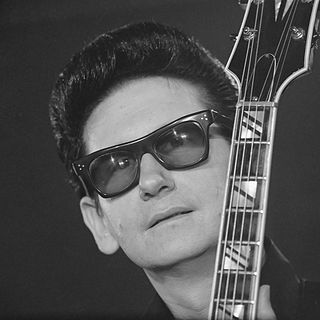
Roy Kelton Orbison was an American singer, songwriter, and guitarist known for his distinctive and powerful voice, complex song structures, and dark, emotional ballads. Orbison's music is mostly in the rock genre and his most successful periods were in the early 1960s and the late 1980s. His music was described by critics as operatic, earning him the nicknames "The Caruso of Rock" and "The Big O". Many of Orbison's songs conveyed vulnerability at a time when most male rock-and-roll performers projected machismo. He performed with minimal motion and in black clothes, matching his dyed black hair and dark sunglasses.
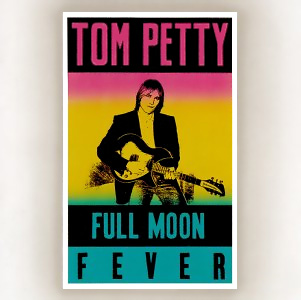
Full Moon Fever is the debut solo studio album by American musician Tom Petty, released on April 24, 1989, by MCA Records. It features contributions from members of his band the Heartbreakers, notably Mike Campbell, as well as Jeff Lynne, Roy Orbison, and George Harrison, Petty's bandmates in the Traveling Wilburys. The record showcases Petty exploring his musical roots with nods to his influences. The songwriting primarily consists of collaborations between Petty and Lynne, who was also a producer on the album. Full Moon Fever became a commercial and critical success, peaking at No. 3 on the U.S. Billboard 200 and being certified 5× platinum in the United States and 6× platinum in Canada.

Mystery Girl is the twenty-second album by American singer Roy Orbison. It was his last album to be recorded during his lifetime, as he completed the album in November 1988, a month before his death at the age of 52, and it was released posthumously by Virgin Records on January 31, 1989. It includes the hit singles "You Got It", which was co-written by Orbison and his Traveling Wilburys bandmates Jeff Lynne and Tom Petty, and "She's a Mystery to Me", written by Bono and The Edge. The album was a critical and commercial success; it peaked at number 5 on the Billboard 200 in the United States, the highest position Orbison had achieved on that chart, and number 2 on the UK Albums Chart.

"Handle with Care" is a song by the British-American supergroup the Traveling Wilburys. It was released in October 1988 as their debut single and as the opening track of their album Traveling Wilburys Vol. 1. The song was the first recording made by the group, although it was originally intended as a bonus track on a European single by George Harrison. When he and Jeff Lynne presented the song to Harrison's record company, the executives insisted it was too good for that purpose, a decision that resulted in the formation of the Wilburys. The song was written primarily by Harrison, although, as with all the tracks on Vol. 1, the writing credit lists all five members of the band: Harrison, Lynne, Bob Dylan, Roy Orbison and Tom Petty.

The Traveling Wilburys Vol. 1 is the debut studio album by the English-American supergroup Traveling Wilburys, comprising George Harrison, Jeff Lynne, Bob Dylan, Roy Orbison and Tom Petty. It was released in October 1988 to commercial success and critical acclaim. Although Harrison had long planned to start such a band, the project came about through happenstance. Harrison was in Los Angeles and in need of a B-side for a single from his album Cloud Nine, which resulted in the participants collaborating informally on the song "Handle with Care" at Dylan's home.
The discography of English singer-songwriter and former Beatle George Harrison consists of 12 studio albums, two live albums, four compilation albums, 35 singles, two video albums and four box sets. Harrison's first solo releases – the Wonderwall Music film soundtrack (1968) and Electronic Sound (1969) – were almost entirely instrumental works, issued during the last two years of the Beatles' career. Following the band's break-up in April 1970, Harrison continued to produce recordings by his fellow Apple Records acts, notably former bandmate Ringo Starr. He recorded and collaborated with a wide range of artists, including Shankar, Bob Dylan, Eric Clapton and Gary Wright.

Traveling Wilburys Vol. 3 is the second and final studio album by the Traveling Wilburys, a group consisting of George Harrison, Jeff Lynne, Bob Dylan and Tom Petty. It was released on October 29, 1990, as the follow-up to their 1988 debut, Traveling Wilburys Vol. 1. The band members again adopted pseudonyms for their contributions, using new names from the fictitious Wilbury brothers.
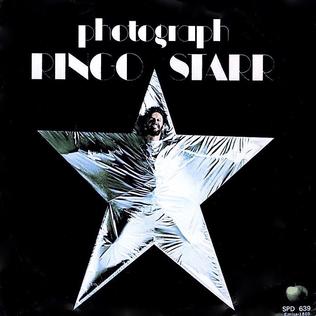
"Photograph" is a song by English rock musician Ringo Starr that was released as the lead single from his 1973 album Ringo. Starr co-wrote it with George Harrison, his former bandmate from the Beatles. Although they collaborated on other songs, it is the only one officially credited to the pair. A signature tune for Starr as a solo artist, "Photograph" was an international hit, topping singles charts in the United States, Canada and Australia, and receiving gold disc certification for US sales of 1 million. Music critics have similarly received the song favourably; Stephen Thomas Erlewine of AllMusic considers it to be "among the very best post-Beatles songs by any of the Fab Four".
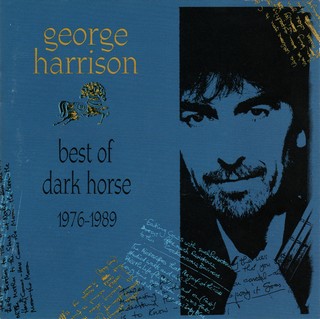
Best of Dark Horse 1976–1989 is a compilation album by the English musician George Harrison, released in October 1989. His second compilation, after the Capitol/EMI collection The Best of George Harrison (1976), it contains songs from Harrison's releases on his Dark Horse record label between 1976 and 1987. The album also includes a 1989 single, "Cheer Down", which was Harrison's contribution to the soundtrack of the film Lethal Weapon 2, and two tracks recorded specifically for the collection: "Poor Little Girl" and "Cockamamie Business". Despite the popularity of Harrison's work over this period – both as a solo artist with his Cloud Nine album (1987), and as a member of the Traveling Wilburys – the compilation failed to achieve commercial success.

"End of the Line" is a song by the British-American supergroup the Traveling Wilburys. It was the final track on their debut album Traveling Wilburys Vol. 1, released in October 1988. It was also issued in January 1989 as the band's second single. The recording features all the Wilburys except Bob Dylan as lead singers; George Harrison, Jeff Lynne and Roy Orbison sing the choruses in turn, while Tom Petty sings the verses. The song was mainly written by Harrison and was assigned to his publishing company, Umlaut Corporation. However, all five members of the group received a songwriting credit in keeping with the collaborative concept behind the Wilburys project.
"Tweeter and the Monkey Man" is a song by the British-American supergroup Traveling Wilburys that first appeared on the 1988 album Traveling Wilburys Vol. 1.

"This Is Love" is a song by English rock musician George Harrison that was released on his 1987 album Cloud Nine. Harrison co-wrote the song with Jeff Lynne, who also co-produced the track. In June 1988, it was issued as the third single from Cloud Nine, peaking at number 55 on the UK Singles Chart.

"She's My Baby" is a song by the British–American supergroup the Traveling Wilburys and the opening track of their 1990 album Traveling Wilburys Vol. 3. The song was written by all four members of the band – George Harrison, Jeff Lynne, Bob Dylan and Tom Petty – and each of them sing a portion of the track. The song was released as the first single from the album, although it was only issued as a promotional single in the United States. The lead guitar part is played by Gary Moore.
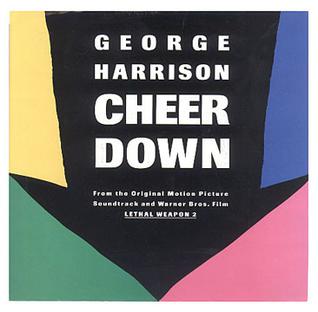
"Cheer Down" is a song by English musician George Harrison that was first released in 1989. The track was his contribution to the soundtrack of the film Lethal Weapon 2 and was also issued as a single. Harrison wrote the song with Tom Petty and co-produced the recording with Jeff Lynne.
"Not Alone Any More" is a song by the British–American supergroup the Traveling Wilburys from their 1988 album Traveling Wilburys Vol. 1. It was sung by Roy Orbison and serves as his main contribution to the album. The song was written mainly by Jeff Lynne, although all five members of the Wilburys are credited as songwriters.
"Heading for the Light" is a song by the British–American supergroup the Traveling Wilburys from their 1988 album Traveling Wilburys Vol. 1. It was written primarily by George Harrison but credited to all five members of the band. Harrison sings the song with Jeff Lynne, who also co-produced the track and, with Harrison, formulated the idea for starting the Wilburys. The song was issued as a promotional single in the United States, where it peaked at number 7 on Billboard's Album Rock Tracks chart. The song received a commercial release in Australia in 1989, where it peaked at number 88 on the ARIA singles chart.
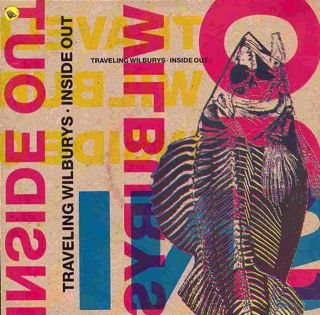
"Inside Out" is a song by the British–American supergroup the Traveling Wilburys from their 1990 album Traveling Wilburys Vol. 3. It was written by all the members of the band, which had been reduced to a foursome following the death of Roy Orbison in December 1988, and it was the first song they worked on for the album. The lyrics address environmental issues and describe a world turned yellow.
"Ride Rajbun" is a song by English musician George Harrison. It was released in 1992 on the multi-artist charity album The Bunbury Tails, which was the soundtrack to the British animated television series of the same name. Harrison co-wrote the song's lyrics with Bunbury Tails creator David English. The eponymous Rajbun was a character in the series based on English's friend and cricketer Rajendrasinh Jadeja, one of a team of cricket-playing rabbits – in this case, from Bangalore in India. The composition is in the style of a nursery rhyme or children's song, while the all-Indian instrumentation on the recording recalls some of Harrison's compositions for the Beatles during 1966–68.
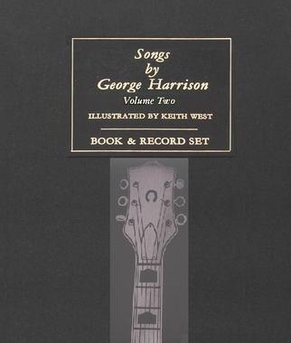
Songs by George Harrison 2 is a book of song lyrics and commentary by English musician George Harrison, with illustrations by Keith West and an accompanying EP of previously unreleased Harrison recordings. It was published in June 1992, in a limited run of 2500 copies, by Genesis Publications. As with Harrison and West's first volume, published in 1988, each copy was hand-bound and available only by direct order through Genesis in England.



















